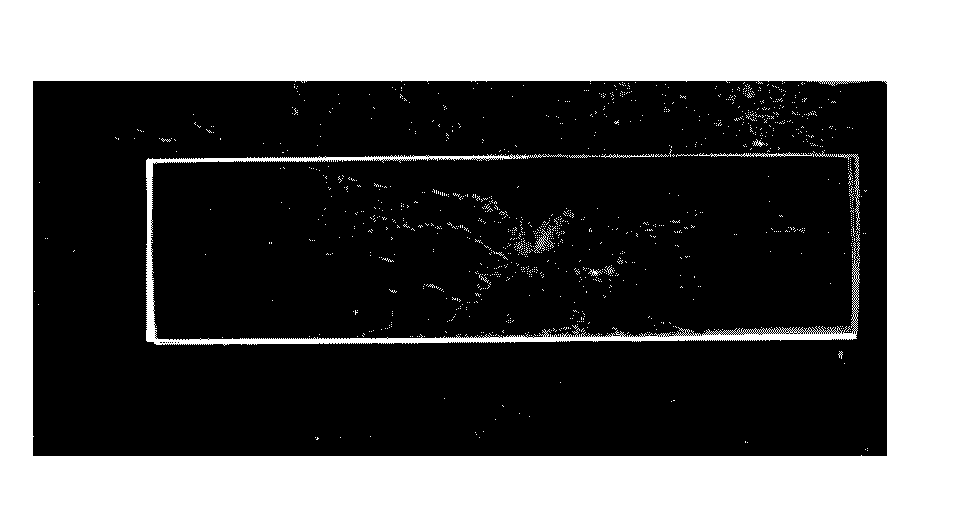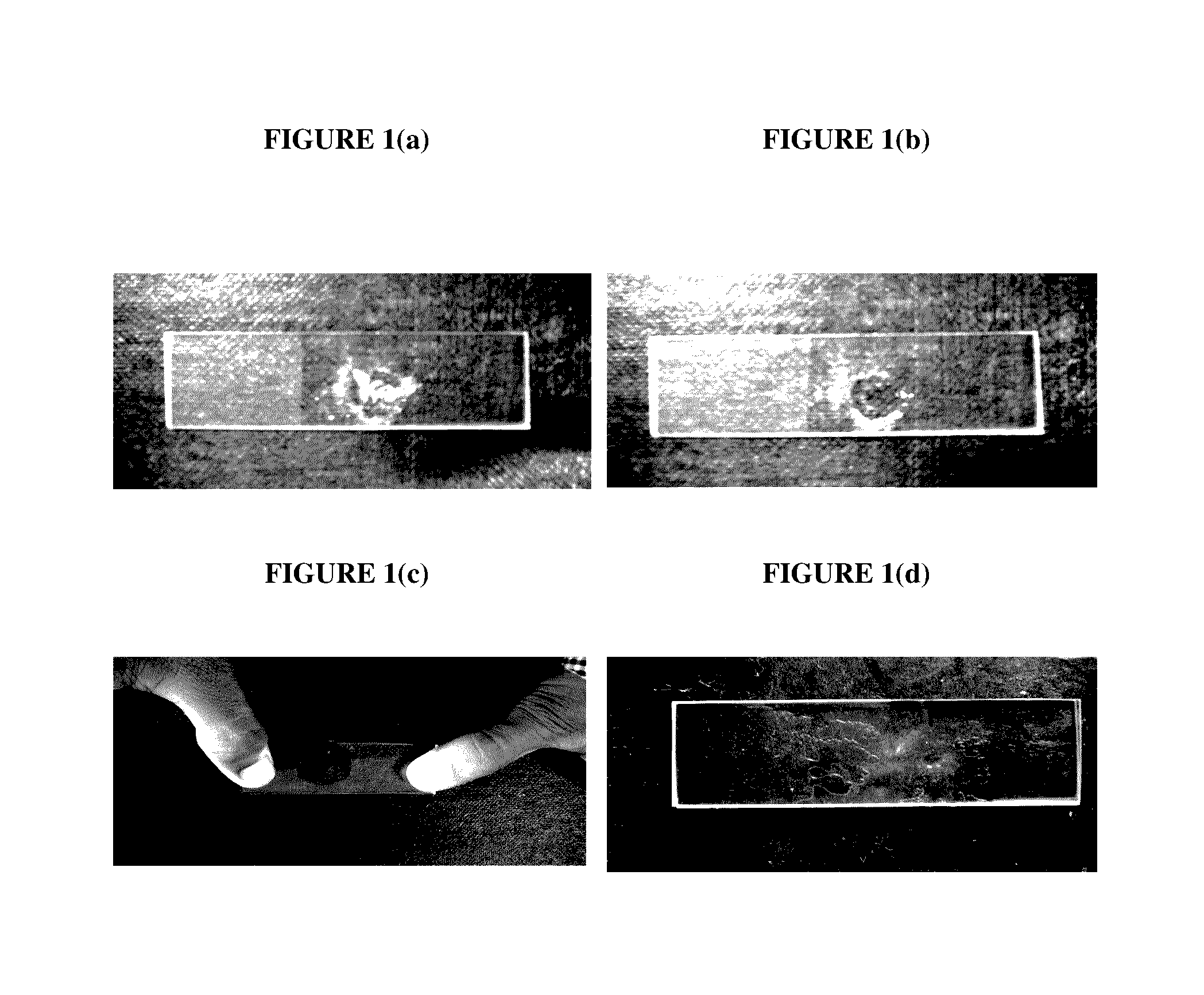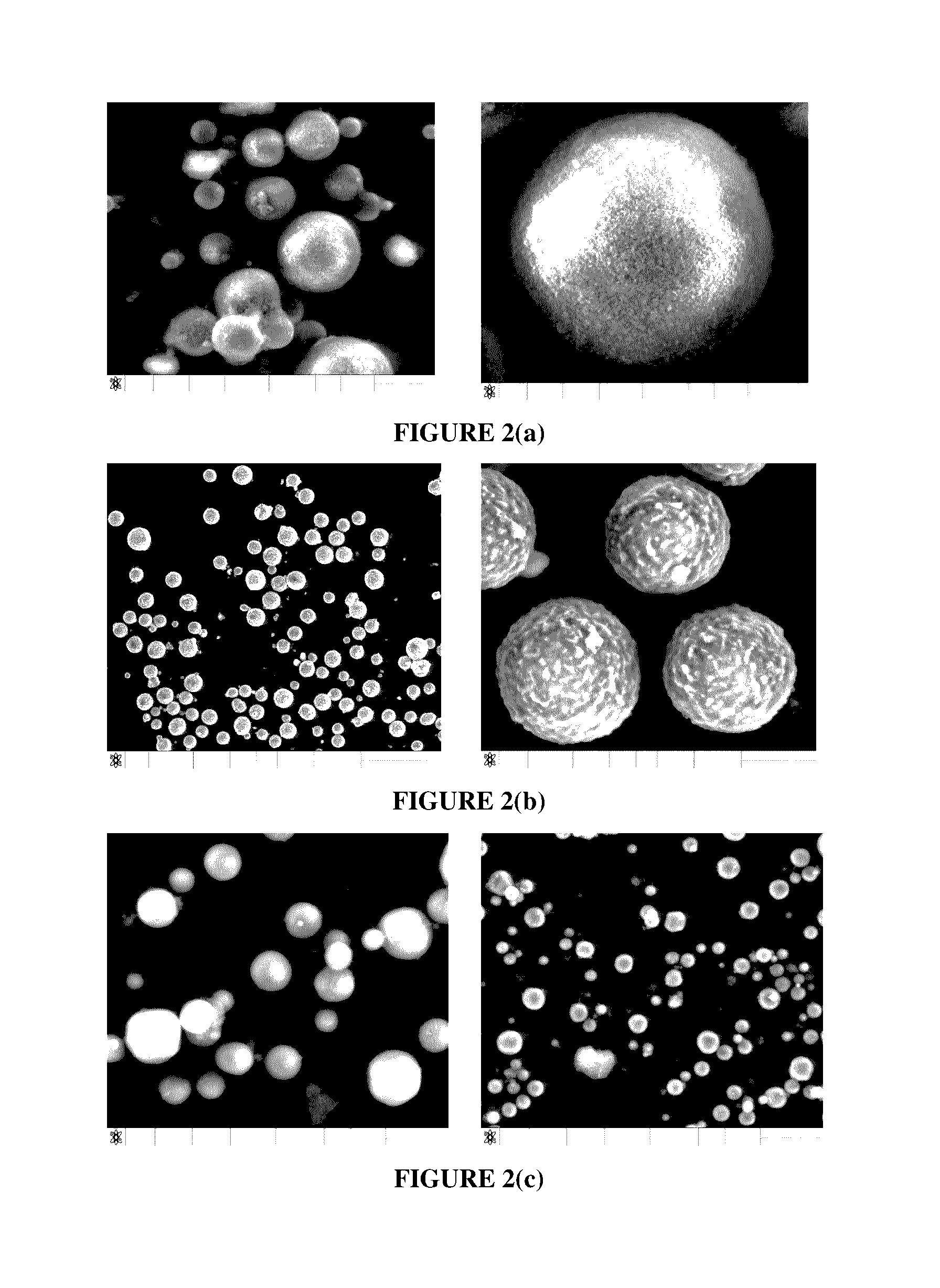Process for preparation of self healing microcapsules
a self-healing microcapsule and epoxy resin technology, which is applied in the preparation of microcapsules, adhesive types, adhesives, etc., can solve the problems of affecting the structural integrity of the product, affecting the strength of the product, and prone to cracks in composite materials
- Summary
- Abstract
- Description
- Claims
- Application Information
AI Technical Summary
Benefits of technology
Problems solved by technology
Method used
Image
Examples
example 1
Preparation of Microcapsules Containing Mixture of Water Soluble and Insoluble Epoxy Resin Using Polyurethane as Capsule Wall Material
[0065]In 250 ml beaker, 20 mg of Hypermer A70 and 0.5 gm of 1% dibutyltindilaurate (DBTDL) in paraffin oil were dissolved in 50 gm of paraffin oil. Beaker was assembled with overhead stirrer and reaction mixture was stirred at 500 rpm. Then 4.79 gm of IPDI was dissolved in 6 gm of epoxy resin mixture. This solution was added into the reaction mixture and stirred for 15 min to stabilize the emulsion. Then 1 gm of ethylene glycol and 0.2 gm of trimethylol propane in 3 gm paraffin oil was added in reaction mixture drop wise over the period of 14 minutes. Reaction mixture was then stirred for 30 minute at 40° C. and then 30 minute at 50° C. Thereafter temperature was raised to 60° C. and stirred for further 4 hours. Then the reaction temperature was brought to 35° C. and kept for overnight. After stirring for 23 hours, 90 ml pet ether was added and was st...
example 2
Preparation of Microcapsules Containing Water-Insoluble Epoxy Resin and Epoxy as Capsule Wall Material
[0067]In 250 ml beaker, 40 mg of Hypermer A70 was dissolved in 50 gm of paraffin oil. Beaker was assembled with overhead stirrer and reaction mixture was stirred at 500 rpm. Then 9.26 gm of water-insoluble epoxy resin (diglycidyl ether of bisphenol A) was added and stirred for 20 minute to stabilize the emulsion. Then 0.5 gm diethylene triamine (DETA) in 3 gm paraffin oil was added in reaction mixture drop wise over the period of 12 minutes. Reaction mixture was then stirred for 30 minute at 40° C. and then 30 minute at 50° C. Thereafter temperature was raised to 60° C. and stirred for further 4 hours. Then the reaction temperature was brought to 35° C. and kept for overnight. After stirring for 23 hours, 90 ml pet ether was added and was stirred for 30 minutes. After the completion of reaction, mixture was filtered by water suction pump and washed with pet ether.
[0068]Finally micro...
example 3
Preparation of Microcapsules Containing Water-Soluble Epoxy Resin and Epoxy as Capsule Wall Material
[0069]In 250 ml beaker, 40 mg of Hypermer A70 was dissolved in 50 gm of paraffin oil. Beaker was assembled with overhead stirrer and reaction mixture was stirred at 500 rpm. Then 4.52 gm of water-soluble epoxy (diglycidyl ether of butane diol) was added and stirred for 20 minute to stabilize the emulsion. Then 0.5 gm diethylene triamine (DETA) in 5 gm paraffin oil was added in reaction mixture drop wise over the period of 10 minutes. Reaction mixture was then stirred for 30 minute at 40° C. and then 30 minute at 50° C. Thereafter temperature was raised to 60° C. and stirred for further 4 hours. Then the reaction temperature was brought to 35° C. and kept for overnight. After stirring for 23 hours, 90 ml pet ether was added and was stirred for 30 minutes. After the completion of reaction, mixture was centrifuged at 3000 rpm for 2 minutes and washed with pet ether.
[0070]Finally microcap...
PUM
| Property | Measurement | Unit |
|---|---|---|
| Hydrophilicity | aaaaa | aaaaa |
| Lipophilicity | aaaaa | aaaaa |
Abstract
Description
Claims
Application Information
 Login to View More
Login to View More - R&D
- Intellectual Property
- Life Sciences
- Materials
- Tech Scout
- Unparalleled Data Quality
- Higher Quality Content
- 60% Fewer Hallucinations
Browse by: Latest US Patents, China's latest patents, Technical Efficacy Thesaurus, Application Domain, Technology Topic, Popular Technical Reports.
© 2025 PatSnap. All rights reserved.Legal|Privacy policy|Modern Slavery Act Transparency Statement|Sitemap|About US| Contact US: help@patsnap.com



